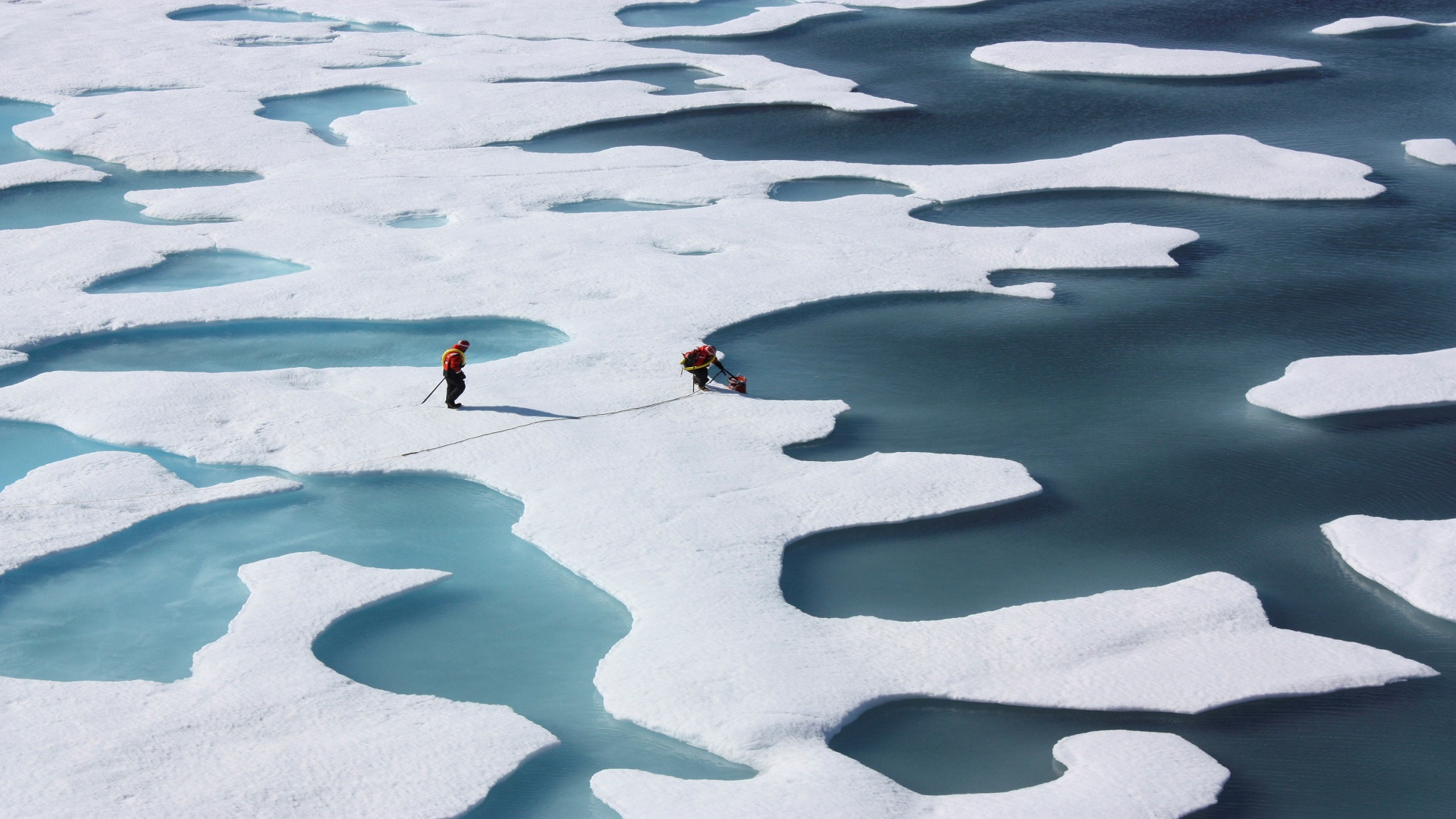Image: FILE PHOTO: The crew of the U.S. Coast Guard Cutter Healy, in the midst of their ICESCAPE mission, retrieves supplies for some mid-mission fixes dropped by parachute from a C-130 in the Arctic Ocean in this July 12, 2011 NASA handout photo obtained by Reuters June 11, 2012. NASA/Kathryn Hansen/Handout via REUTERS/File Photo
By Alister Doyle
OSLO (Reuters) – The extent of sea ice in the Arctic Ocean has set a new record low for the wintertime in a region strongly affected by long-term trends of global warming, U.S. and European scientists said on Wednesday.
Sea ice around the North Pole expands to its biggest extent of the year in February or March after a deep freeze in the winter polar darkness and shrinks to the smallest of the year in September, at the end of the brief Arctic summer.
Arctic sea ice appears to have reached its annual maximum extent on March 7, the lowest maximum in the 38-year satellite record, according to the Colorado-based U.S. National Snow and Ice Data Center.
On that date, the ice covered 14.42 million square kilometers (5.57 million square miles),97,000 square kilometers below the previous lowest maximum that occurred on Feb. 25, 2015.
The trend of shrinking ice around the North Pole in recent decades has been one of the starkest signs of climate change.
The thaw is harming indigenous peoples’ hunting livelihoods on the ice and threatening wildlife such as polar bears. It also makes the region more accessible for shipping as well as oil and gas exploration.
Worldwide, last year was the warmest on record for the third year in a row, despite government efforts to rein in man-made greenhouse gas emissions under a 2015 Paris Agreement that aims to phase out the use of fossil fuels this century.
Earlier on Wednesday, scientists at the University of Bremen in Germany published similar findings. Their data showed that the ice covered just 14.49 million square kilometers (5.59 million square miles) on Feb. 22, almost the size of Russia, fractionally smaller than the previous winter low of 14.58 million square kilometers set last year in satellite records dating back to the 1970s.
“We’ve passed the winter maximum,” Georg Heygster, of the Institute of Environmental Physics at the University of Bremen told Reuters. Only a sudden, unusual March freeze would push the ice back to above the February extent.
Sea ice in the Arctic could vanish by 2050 on a trend of rising emissions, according to a U.N. panel of climate experts.
At the other end of the world, sea ice around Antarctica hit a record low for the southern summer last month, the NSIDC said.
The shrinking sea ice exposes more water to the sun’s rays in summertime. That can accelerate global warming because dark blue water soaks up more of the sun’s heat than white ice or snow, which reflects it back into space.
(Reporting by Alister Doyle in Oslo; additional reporting by Valerie Volcovici in Washington; Editing by Julia Glover and Andrew Hay)
Copyright 2017 Thomson Reuters. Click for Restrictions.


